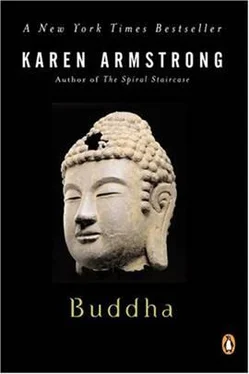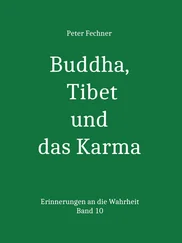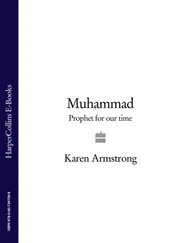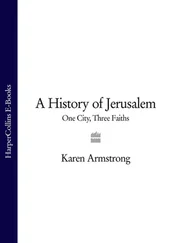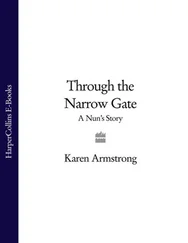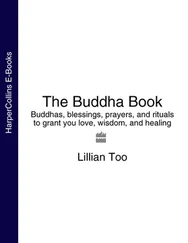Recorded history only begins in about 3000 b.c.e.; until that time we have little documentary evidence of the way human beings lived and organized their societies. But people always tried to imagine what the 20,000 years of prehistory had been like, and to root their own experience in it. All over the world, in every culture, these ancient days were depicted in mythology, which had no historical foundation but which spoke of lost paradises and primal catastrophes. In the Golden Age, it was said, gods had walked the earth with human beings. The story of the Garden of Eden, recounted in the Book of Genesis, the lost paradise of the West, was typical: once upon a time, there had been no rift between humanity and the divine: God strolled in the garden in the cool of the evening. Nor were human beings divided from one another. Adam and Eve lived in harmony, unaware of their sexual difference or of the distinction between good and evil. It is a unity that is impossible for us to imagine in our more fragmented existence, but in almost every culture, the myth of this primal concord showed that human beings continued to yearn for a peace and wholeness that they felt to be the proper state of humanity. They experienced the dawning of self-consciousness as a painful fall from grace. The Hebrew Bible calls this state of wholeness and completeness shalom ; Gotama spoke of Nibbana and left his home in order to find it. Human beings, he believed, had lived in this peace and fulfillment before, but they had forgotten the path that led to it.
As we have seen, Gotama felt that his life had become meaningless. A conviction that the world was awry was fundamental to the spirituality that emerged in the Axial countries. Those who took part in this transformation felt restless-just as Gotama did. They were consumed by a sense of helplessness, were obsessed by their mortality and felt a profound terror of and alienation from the world. They expressed this malaise in different ways. The Greeks saw life as a tragic epic, a drama in which they strove for katharsis and release. Plato spoke of man’s separation from the divine, and yearned to cast off the impurity of our present state and achieve unity with the Good. The Hebrew prophets of the eighth, seventh and sixth centuries felt a similar alienation from God, and saw their political exile as symbolic of their spiritual condition. The Zoroastrians of Iran saw life as a cosmic battle between Good and Evil, while in China, Confucius lamented the darkness of his age, which had fallen away from the ideals of the ancestors. In India, Gotama and the forest monks were convinced that life was dukkha : it was fundamentally “awry,” filled with pain, grief and sorrow. The world had become a frightening place. The Buddhist scriptures speak of the “terror, awe and dread” that people experienced when they ventured outside the city and went into the woods. Nature had become obscurely menacing, rather as it had become inimical to Adam and Eve after their lapse. Gotama did not leave home to commune happily with nature in the woods, but experienced a continuous “fear and horror.” If a deer approached or if the wind rustled in the leaves, he recalled later, his hair stood on end.
What had happened? Nobody has fully explained the sorrow that fueled Axial Age spirituality. Certainly men and women had experienced anguish before. Indeed, tablets have been found in Egypt and Mesopotamia from centuries before this time that express similar disillusion. But why did the experience of suffering reach such a crescendo in the three core Axial regions? Some historians see the invasions of the nomadic Indo-European horsemen as a common factor in all these areas. These Aryan tribesmen came out of Central Asia and reached the Mediterranean by the end of the third millennium, were established in India and Iran by about 1200 b.c.e. and were in China by the end of the second millennium. They brought with them a sense of vast horizons and limitless possibilities, and, as a master race, had developed a tragically epic consciousness. They replaced the old stable and more primitive communities, but only after periods of intense conflict and distress, which might account for the Axial Age malaise. But the Jews and their prophets had no contact with these Aryan horsemen, and these invasions occurred over millennia, whereas the chief Axial transformations were remarkably contemporaneous.
Moreover, the type of culture developed by the Aryans in India, for example, bore no relation to the creativity of the Axial Age. By 1000 b.c.e., the Aryan tribesmen had settled down and established agricultural communities in most regions of the subcontinent. They dominated India society to such an extent that we now know almost nothing about the indigenous, pre-Aryan civilization of the Indus valley. Despite the dynamism of its origins, however, Aryan India was static and conservative, like most pre-Axial cultures. It divided the people into four distinct classes, similar to the four estates which would develop later in feudal Europe. The brahmins were the priestly caste, with responsibility for the cult: they became the most powerful. The warrior ksatriya class was devoted to government and defense; the vaisya were farmers and stockbreeders who kept the economy afloat; and the sudras were slaves or outcastes who were unable to assimilate into the Aryan system. Originally the four classes were not hereditary; native Indians could become ksatriyas or brahmins if they possessed the requisite skills. But by Gotama’s time, the stratification of society had acquired a sacred significance and become immutable, since it was thought to mirror the archetypal order of the cosmos. There was no possibility of changing this order by moving from one caste to another.
Aryan spirituality was typical of the ancient, pre-Axial religions, which were based on acceptance of the status quo, involved little speculative thought about the meaning of life and saw sacred truth as something that was given and unchangeable; not sought but passively received. The Aryans cultivated the drug soma, which put the brahmins into a state of ecstatic trance in which they “heard” ( sruti ) the inspired Sanskrit texts known as the Vedas. These were not thought to be dictated by the gods but to exist eternally and to reflect the fundamental principles of the cosmos. A universal law, governing the lives of gods and human beings alike, was also a common feature of ancient religion. The Vedas were not written down, since writing was unknown in the subcontinent. It was, therefore, the duty of the brahmins to memorize and preserve these eternal truths from one generation to another, passing down this hereditary lore from father to son, since this sacred knowledge put human beings in touch with brahman, the underlying principle that made the world holy and enabled it to survive. Over the centuries, Sanskrit, the language of the original Aryan tribesmen, was superseded by local dialects and became incomprehensible to everybody but the brahmins -a fact which inevitably enhanced the brahmins’ power and prestige. They alone knew how to perform the sacrificial ritual prescribed in the Vedas, which was thought to keep the whole world in existence.
It was said that at the beginning of time, a mysterious Creator had performed a primal sacrifice that brought gods, humans and the entire cosmos into existence. This primeval sacrifice was the archetype of the animal sacrifices performed by the brahmins , which gave them power over life and death. Even the gods depended upon these sacrifices and would suffer if the ritual was.not performed correctly. The whole of life therefore centered around these rites. The brahmins were clearly crucial to the cult, but the ksatriyas and vaisyas also had important roles. Kings and noblemen paid for the sacrifices, and the vaisyas reared the cattle as victims. Fire was of great importance in Vedic religion. It symbolized humanity’s control over the forces of nature, and the brahmins carefully tended three sacred fires in shrines. Each householder also honored his own domestic hearth with family rites. On the “quarter” ( uposatha ) days of each lunar month, special offerings were made to the sacred fire. On the eve of the uposatha, brahmins and ordinary householders alike would fast, abstain from sex and work, and keep night vigil at the hearth. It was a holy time, known as the upavasatha, when the gods “dwelt near” the householder and his family beside the fire.
Читать дальше
